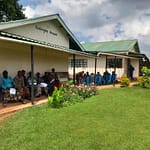Phases of a Clinical Trial

Before becoming standard treatment, drugs and treatment procedures go through different phases of clinical trials. These phases include the following:
- Pre-clinical TrialPhase
- Phase I Trial
- Phase II Trial
- Phase III Trial
- Phase IV Trial
When taking part in a clinical trial, you will be eligible for only one phase of the study. As the treatment moves through the phases, more patients are added.
Pre-clinical Trial Phase
Clinical Trials begin in the lab in the preclinical trial phase. At this point, researchers test the drugs in a research lab using test tubes, cell cultures, and test animals. The lab testing checks:
- the effectiveness of the treatment
- side-effects
- how long a treatment should last
- how your body interacts with the drugs
- Etc
Pre-clinical trials phase lays a foundation for the other phases by establishing the preliminary results of a study.
Phase I Trials
Phase I clinical trials test the safety of the new drugs or treatment procedures on patients. At this phase, doctors also establish the best treatment method. Some of the goals at this phase of the study include:
- Checking the safety of the drug
- The best way of administering the drug; orally, IV, etc.
- If cancer responds to the drug or treatment
During Phase I trials, a small group of 10-30 volunteer patients are put into groups called cohorts. The first cohort receives a specific dose of the new drugs and gives urine and blood samples to check the drug levels in their body.
If the drug does not have severe side effects on patients in the first cohort, the second cohort receives a higher dosage. Each subsequent cohort receives a higher dosage until the doctors find the best dose for the drugs ready for the next phase of testing.
Phase II Trials
A clinical trial drug in phase II studies how effective the new treatment is on certain cancers. The drug is given to patients with the same cancer or different cancers. During this phase, the maximum number of volunteer patients also increase to 100.
Some of the goals of Phase II clinical trials include:
- Checking if the treatment works well enough to be tried on a larger group
- The types of cancer that respond to the treatment
- Finding additional side effects and their management
- Refining the best dose for the drug
Once Phase II trials show promise, they can move to Phase III, which accepts more volunteers.
Phase III Trials
Every cancer has a standard treatment that’s widely used and accepted. In Phase III of clinical trials, a researcher tries to compare the new drug with what is currently in use.
In Phase III trials, a patient is picked at random to get either the new drug or the standard treatment. In most cases, both the doctor and the patient do not know what drug is given in what is called a double-blind study.
A double-blind study ensures there is no preference by doctors on who gets what drug. A double-blind study ensures the most accurate results of the study.
Phase III clinical trials take longer than Phase I and Phase II. They also have more volunteers spread across different places, sometimes across countries and continents. In addition, phase 3 includes different age groups, genders, and races as much as possible to determine the treatment’s effectiveness.
Phase IV Trials
In Phase IV clinical trials, the goal of the study is to fine-tune what is known about the drugs. At this stage, the drug may have already been approved by a country’s regulator but researchers still want to learn more about it.
In Phase IV, the doctors want to find out
- Additional side effects of the drugs
- How well the drugs with different groups other than the initial volunteers e.g. children.
- If the drugs are more effective in different doses or with other drugs
- Long-term effectiveness of the treatment
- If the drug can be used in a different way e.g. on other cancers.
Phase IV trials cover more patients compared to Phase III trials and may run for a longer period.
What is randomization in clinical trials?
Some phases of clinical trials group patients into control and study arms of the trials. The control arm may use standard treatment and a placebo while the study arm gets the trial drug with the standard drug. Randomization is the process of randomly putting patients into either group using a computer program.
What is a placebo?
A placebo is not a drug but a substance used in clinical trials with standard treatment because it does not affect your body or disease in any way. For studies other than cancer, a placebo may be given alone.
Opening Hours
| Monday – Friday | 8.00 – 17.00 |
| Weekends | Closed |
| Holidays | Closed |
Quick Contacts
- Address P.O. Box 8088-30100, Nandi Rd., Eldoret
- Email info@intercancer.com
- Phone +254 718 473 446





